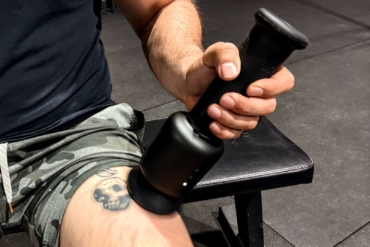The National Interscholastic Cycling Association continues to see record growth in high school mountain biking around the country. But for newbies, the individual sport can be intimidating. We want to thrash that.

Pro track bike racer Kelly Catlin, 23, cut her teeth on the trail with her Minnesota high school’s mountain bike team. She shared what other young riders should know before joining their local squad.
Joining the Team
Catlin said you need virtually zero skill to be part of the The National Interscholastic Cycling Association (NICA). “I recall we had riders who had raced on the road for many years prior, as well as students who had only just received their first mountain bike,” she said.
“The beauty of the league structure is that, unlike most high school sports, grade level alone does not determine your competition category; that is, even senior high schoolers with zero experience could (and did) race with fellow beginners outside of the varsity category.”
A Nontraditional Sport
High school mountain biking is considered a more individual sport than football and soccer, for example. This can be both positive and negative.
“At first blush, this might seem to make it unattractive to most teenagers eager to spend time with and socialize with friends,” Catlin said. “But it is this difference that attracts a fair number of students to NICA initially; that is, it is not a traditional high school sport.
She said many kids are wary of overly structured practices, and high school mountain biking is a great alternative. “Would you rather run back and forth on a turf field, vainly competing for a spot on varsity, or ride off and explore new trails with friends?”
Barrier of Entry
As welcoming as she found the NICA program to be, Catlin said affording the equipment is an issue: “Even an entry-level racing mountain bike will likely cost $1,000 or more.”
That said, NICA and many local teams have collected donated mountain bikes for new riders to use for both practice and racing. Many will provide helmets to newbies too. And a water bottle is important. But that’s all you really need.
“I just wore good-old Lycra for racing, but there are, of course, mountain bikers who prefer more casual attire,” she said.
“A repair kit is the final piece of gear that could be useful for a beginner, but that requires the knowledge to repair flats and simple mechanical problems first.”
How to Start Training
Most NICA students are required to ride with their high school team under licensed coaches and mentors. That’s huge, according to Catlin who had an entirely different experience learning to road race.
She told us, “The average beginning road racer must embrace information overload in figuring out how to train themselves: cadence, power, and gears!”
Skill is almost important as strength in mountain biking, which Catlin said she struggled with when crossing over disciplines.
“As a road racer, the ratios skew much more in favor of strength. And as such my training mindset was squarely focused on having a ride plan every day, and completing that ride plan, I could never release my annoyance at riding a mountain bike just for the sake of riding and gaining experience,” she explained.
“So, to new riders: Don’t get bogged down in the numbers.”
Race Day Tips
Preparation for race day, especially numero uno, is key, said Catlin. Peep her checklist:
- Ensure your race registration is approved
- Attach your number plate to your bike
- Check how long it will take you to get to the course
- Pack your car the night before
- Load water bottles (with mix for carbohydrates, and electrolytes if warm)
- Get up early on race day so you’re not scrambling
- Focus on smart race-morning nutrition
- Arrive an hour prior to your race warm-up window
- Pre-ride the course if possible
- Get to the start line on time, ready for your call-up
“That alone can feel like you’ve already achieved something grand,” she said.
After that, it’s all about keeping a steady, strategic mindset. “There will be a scramble for position once the start-gun goes off, as mountain bike races are often largely composed of single- or double-track with little room for passing other racers,” Catlin said. “Fight for position if you are comfortable doing so, and settle in.”
Her rule of thumb was drinking every 10 minutes, no matter what, and then consuming some sort of race food every half-hour or hour. “Keeping fueled and hydrated throughout a multiple-hour race will often guarantee you an advantage in the last hour, as even many experienced racers can become lax,” she said.
Enjoy the Ride
Don’t forget to embrace the uniqueness of the sport of mountain biking — the travel, people, and time outdoors. “The NICA league offers the possibility of really genuine friendships due to the sheer diversity in the field of competitors,” Catlin said. “Everyone has something they can teach or support you with regardless of experience.”
In many ways, high school mountain biking is a community on another level. “I have been in hundreds of races, from local criteriums to the Olympics now, and never have I experienced a more supportive crowd than at a NICA event,” she said.
“NICA racers will often be found cheering on their competitors and competing high school teams. Ultimately, cycling becomes what it should be about: the ride, not the medal.”













